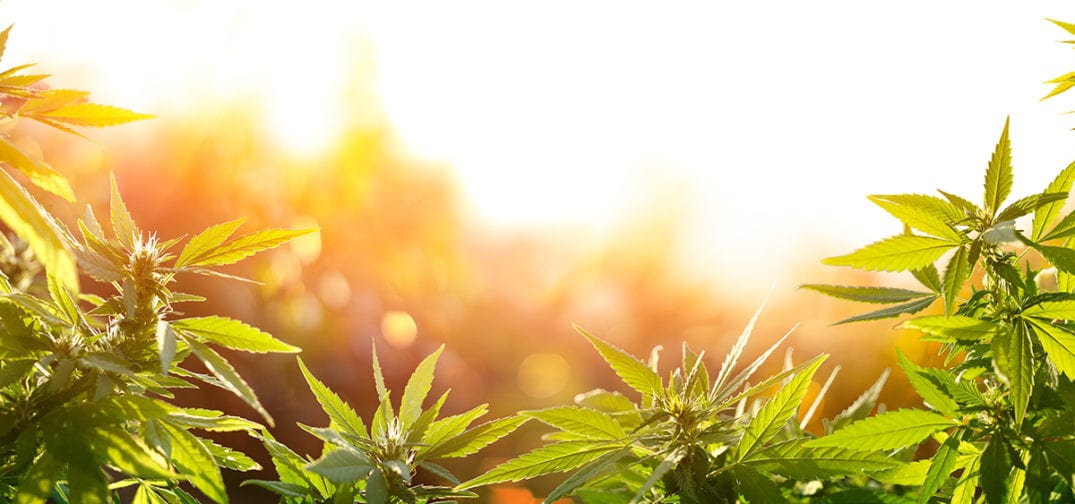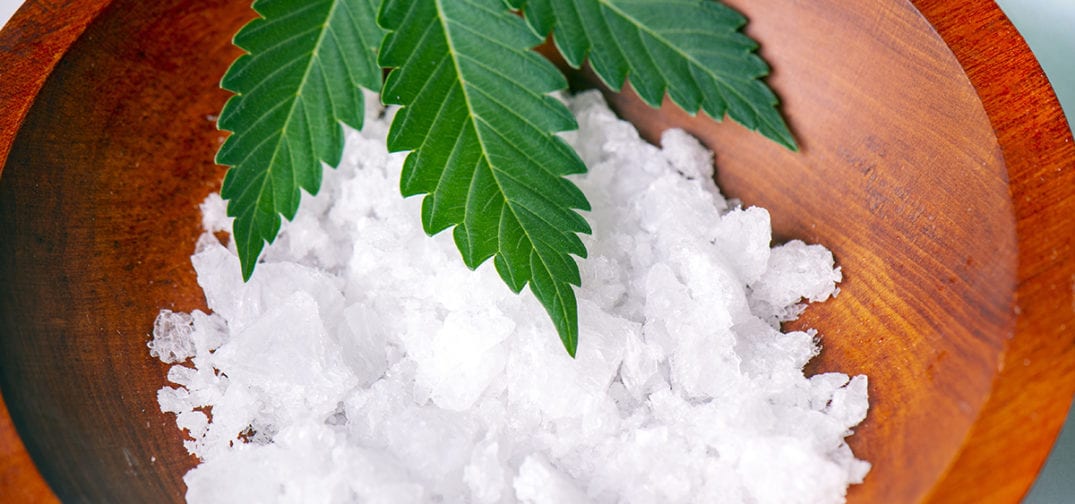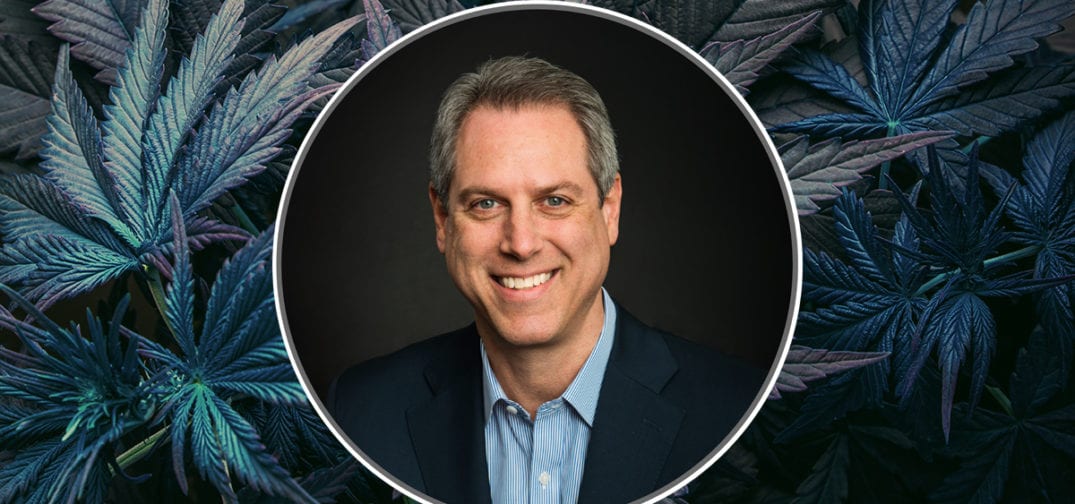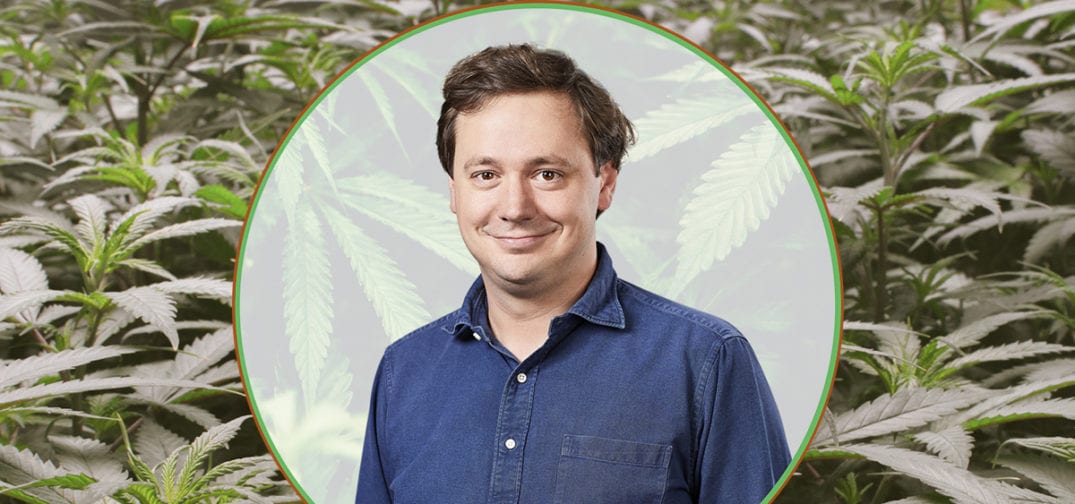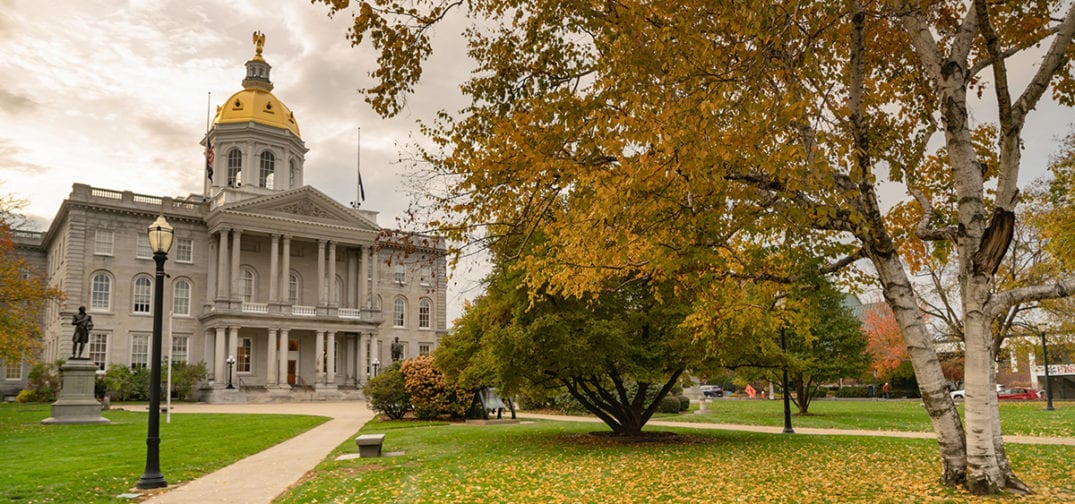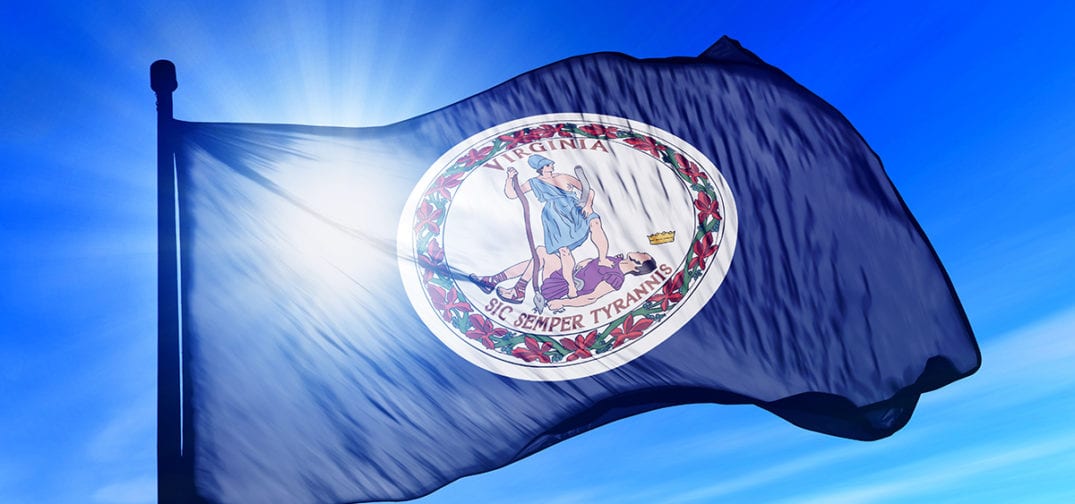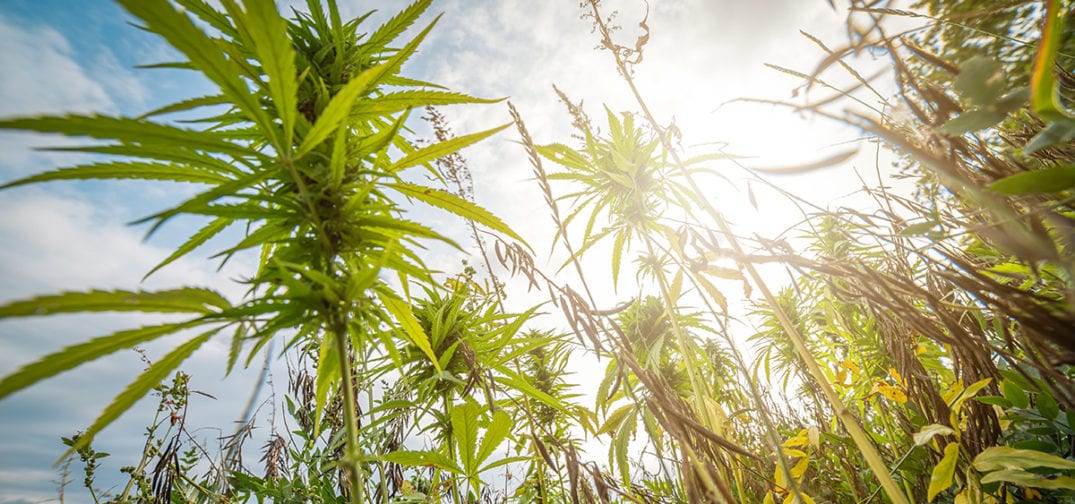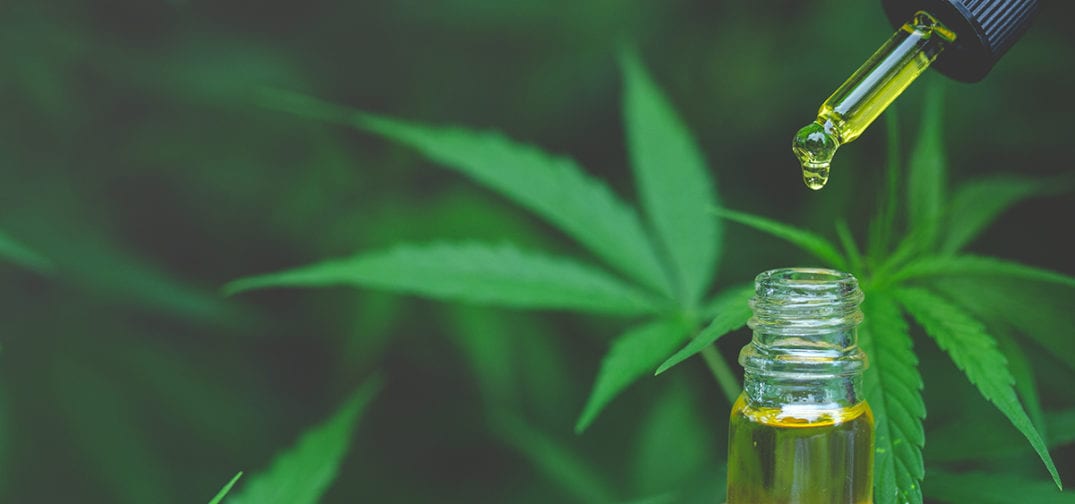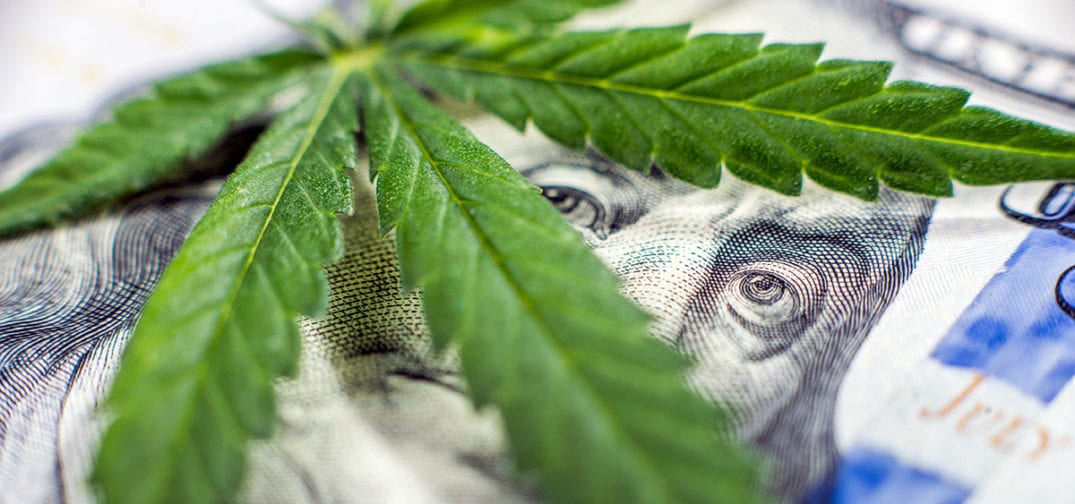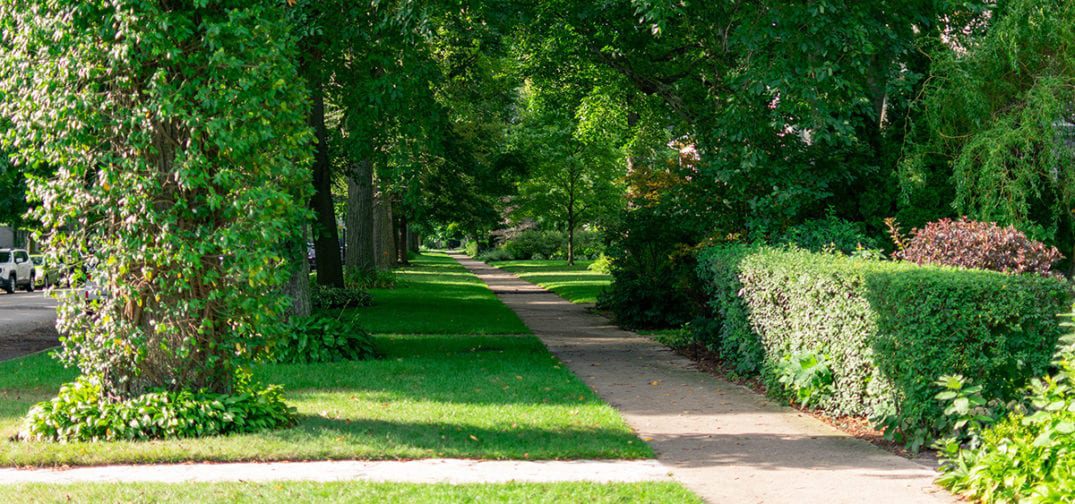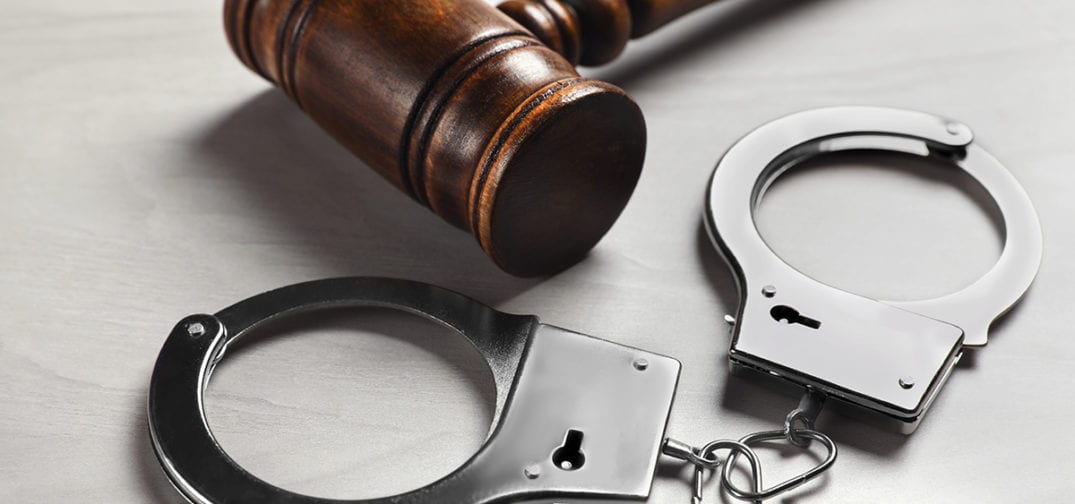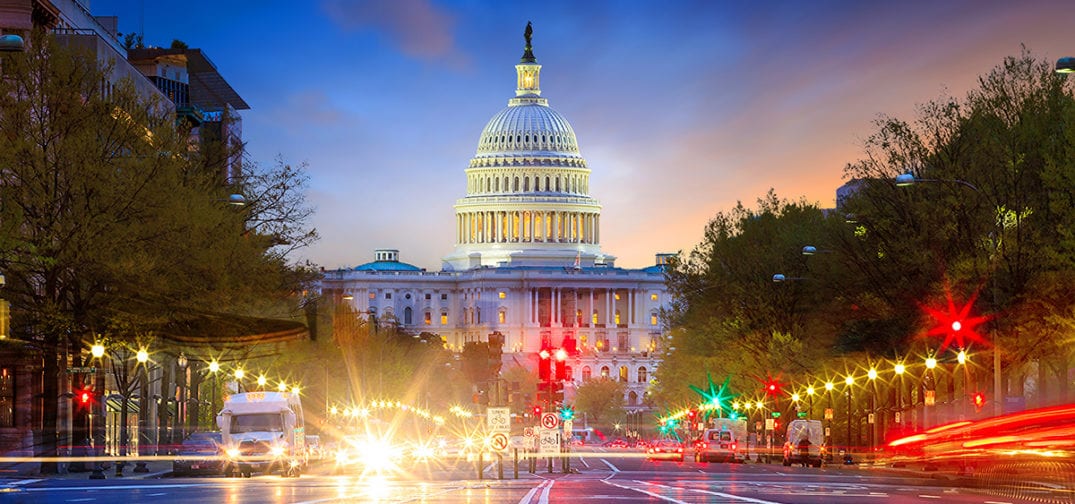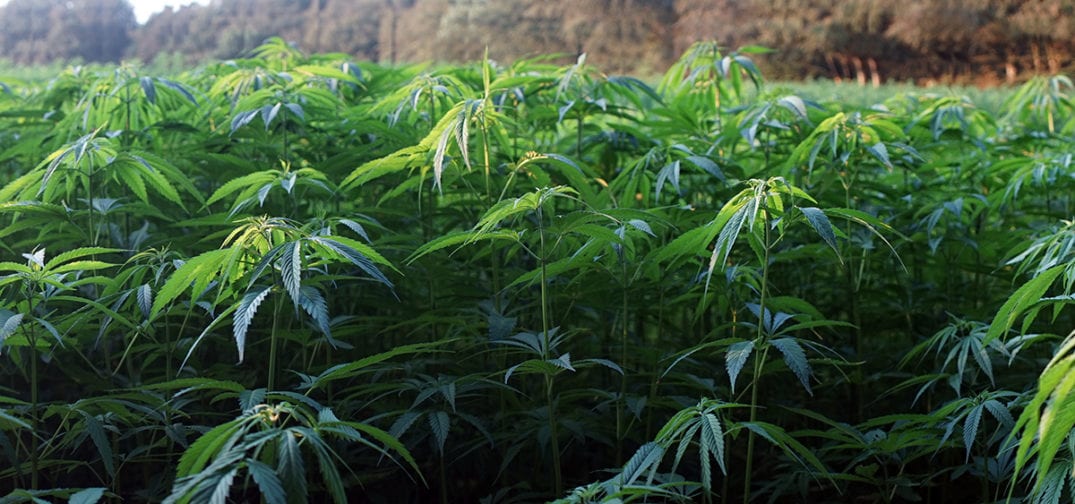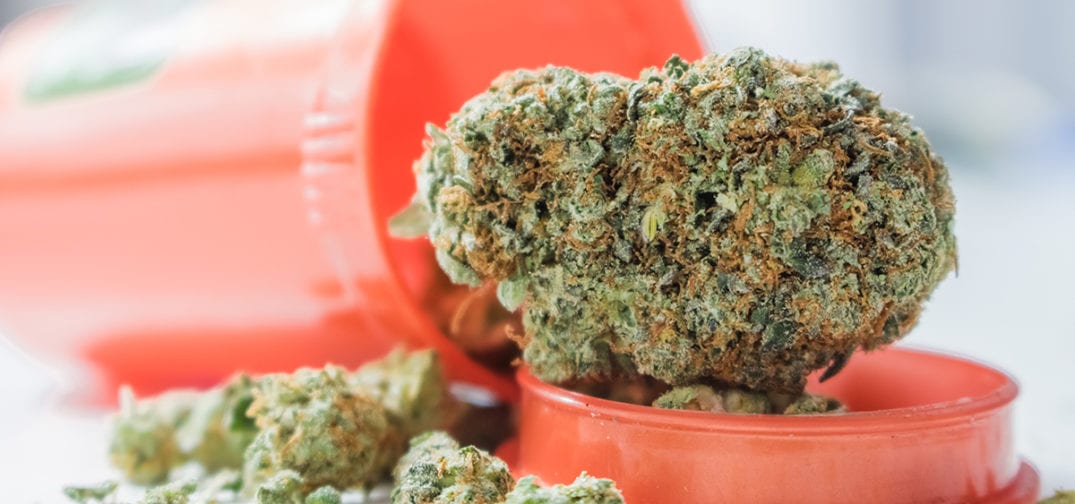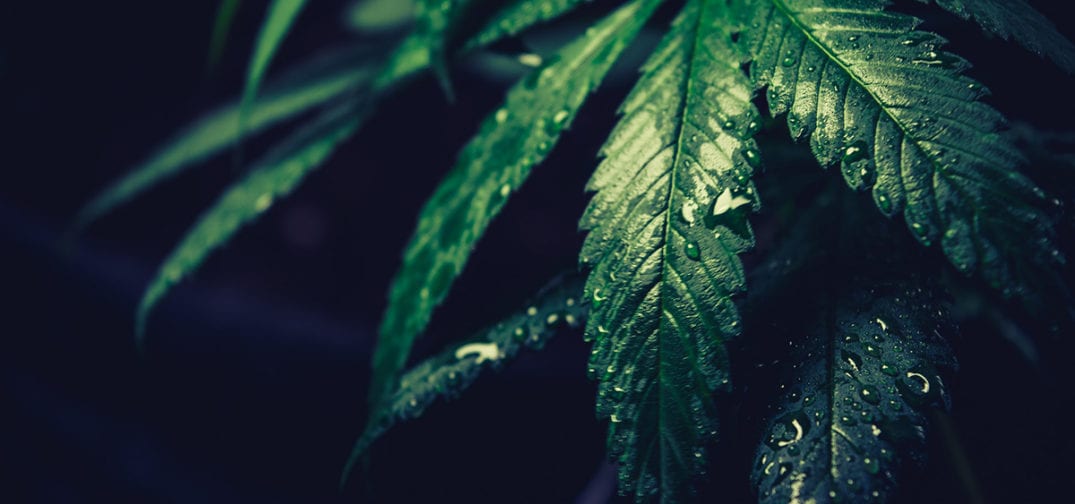Chris recently joined our podcast host TG Branfalt for an interview that ranges from broad entrepreneurialism to the latest federal cannabis policy developments. During their conversation, Chris discusses Hawthorne‘s status as a subsidiary of Ohio-based ScottsMiracle-Gro — the cultivation supplies powerhouse that has become a household brand throughout decades of success — and offers a unique look at his experiences coming from a more corporate environment at Scotts to the new and burgeoning cannabis space.
You can tune in to the latest Ganjapreneur.com podcast episode below, or scroll further down to find a full transcript of the interview.
Listen to the podcast:
Read the transcript:
Commercial: This episode of the Ganjapreneur podcast is made possible by 420-friendly service providers in the Ganjapreneur business directory. If you need professional help with your business, from accounting, to legal services, to consulting, marketing, payment processing, or insurance, visit Ganjapreneur.com slash businesses to find service providers who specialize in helping cannabis entrepreneurs like you. Visit the Ganjapreneur business directory today at Ganjapreneur.com/businesses.
TG Branfalt: Hey there. I’m your host, TG Branfalt and thank you for listening to the Ganjapreneur.com podcast where we try to bring you actionable information and normalize cannabis through the stories of Ganjapreneurs, activists, and industry stakeholders.
Today I’m joined by Chris Hagedorn. He’s the general manager for Vancouver, Washington-based Hawthorne Gardening, which provides cultivation supplies. He’s been a featured speaker at MJBizCon, and has been in his role with Hawthorne since 2014. How are you doing today, Chris?
Chris Hagedorn: I’m doing all right, man. How about yourself?
TG Branfalt: Never a bad day, man. Never a bad day. It’s nice to have you on. I admittedly, and I’ve said this on the show several times, I’ve never even grown a sunflower. It’s nice to have people on that can fill in these big gaps that I have in my own knowledge base and help to inform our listeners.
Before we get into some of the details of what you do, tell me about yourself. How’d you end up in the cannabis space?
Chris Hagedorn: Sure, yes. So grew up around the gardening business. My grandpa actually, Horace, started Miracle Grow back in the fifties here in New York, which is where I’m at currently. So grew up around the business. My old man, Jim, took it over in the mid-90’s. So always been around growing plants.
When I was getting out of college, getting married and all that, started looking at the business. Me, my father, our board of directors and everyone saw what looked like a big opportunity. So we started looking around and it’s always something that we’ve been personally, as a family, kind of passionate about, both the recreational and therapeutic medical side. It was personal passion and business interest aligned and just super lucky to be here at this time. This window opened that we were able to throw ourselves through.
TG Branfalt: You’re in New York right now. Are you in New York City?
Chris Hagedorn: No, no. I’m on Long Island, a town called Port Washington.
TG Branfalt: All right. I’m also in New York. I live in the Adirondacks. This coming session it’s looking like we might actually get legalization. The industry you’re in, are you guys expecting that? What’s sort of the hubbub within the industry in New York?
Chris Hagedorn: So look, we’re certainly hopeful. We try to stay pretty active when it comes to government relations. Look, it’s a prettier word for lobbying, which always kind of had a negative connotation to me, until I got into a business where it felt pretty necessary to help steer politicians and legislators who might not be super informed about this industry, to make sensible decisions for their constituents, for the voters.
We’re hopeful. But again, look I was hopeful last time this thing came up, and we got stymied by law enforcement and Mothers Against Drunk Driving, a lot of people who I think are well intentioned but maybe not super well informed about the industry, about the product. So again, I’m cautiously optimistic but I don’t think I can go much further than that.
TG Branfalt: Well in Long Island, we have sort of the strange democrats down there that don’t often support medical cannabis. In upstate New York, that’s obviously the same deal, is that they don’t support cannabis policy. Anyway, we sort of went off on a tangent there.
Tell me what sets Hawthorne apart from other picks-and-shovels companies in the cannabis industry.
Chris Hagedorn: I think the biggest thing that sets us apart is we really look at the grow, whether you’re talking about a small basement grow, like a ten lighter, or a big indoor grow, a greenhouse, or even outdoor. Then we look at everything pretty holistically. We don’t have a lot of people that compete against us in every single category that we’re in.
I think when you look at lights and nutrients, growing media, air handling and filtration, kind of H fax stuff, control systems, that we really look at it all in a way that I’m not sure a lot of other people do. Which I think you need to when everything needs to work together.
TG Branfalt: When you talk about the nutrients and all of the stuff that you offer, what’s the learning curve there applying that to cannabis for you and for the consumers that you might come across?
Chris Hagedorn: Sure, yeah. Look, I think there’s a pretty steep learning curve when it comes to growing this plant. It’s a plant and I think the vast majority of plants share a whole bunch of different attributes that are fairly common across the board. Every plant needs light, every plant needs water and nutrients and all that.
But this is a really, really complex plant. We’ve certainly learned. Scott’s is a company that’s been around. So just a little background, Scott’s and Miracle Grow merged back in 1995. Miracle Grow was my family’s business. Scott’s had already existed. So combined, the business has existed for over 150 years. We’ve been growing plants that whole time. So we felt like we had a pretty good grasp on how this whole thing worked.
It’s been a real learning experience for us over the past five, six years that we’ve been entered the category, just learning how much complexity there is to the plant, how many different ways you can push it to do different things. And frankly, that’s something we’re hoping to learn even more about. We’re building an R&D facility up in Canada right now so we can do real research on the plant we can’t do here in the US.
So I think the learning curve is steep and we haven’t reached the top of it or bottom of it, however you want to look at it, yet. And won’t for some time.
TG Branfalt: Miracle Grow, that’s a household name. I guess the question is, what was the internal decision making that went on when you guys decided to enter this space?
Chris Hagedorn: We’ve been looking at cannabis for quite a while. I think my old man is first sort of recorded saying something in a Wall Street Journal article back in like, 2011. He was asked by the interviewer, “Is this something you guys are looking at?” And he said, “Yeah. Look, it’s people growing plants. There’s no reason we wouldn’t.”
At the time, our Board of Directors and a lot of our investors flipped out and were super uncomfortable with the idea. So it took a few more years for us to kind of get over the hump with people, to show them it was a worthwhile initiative for us and a worthwhile strategy. Once we got over that hump, there was still a bit of testing the water where we were saying, “Okay, we’ll buy a nutrient brand.” Because we know plant food. Before something like lights, which we did subsequently.
TG Branfalt: Since 2014, you guys have added general hydroponics, botanic care, Gavina horticulture lighting to the portfolio. What do you guys look for in potential brands?
Chris Hagedorn: Yeah. We look for brands that … There’s a lot of brands across the hydro category that are what I would consider sort of less clean, and I’m talking about some sort of a brand identity perspective. Some brands that advertise it’s all about weed, it’s all about women shoving big buds into their cleavage and stuff, which is fine, whatever. I don’t mean to sound judgey.
TG Branfalt: No, you see that a lot at trade shows.
Chris Hagedorn: Oh yeah. No, it’s all over the place. I think for a while, it had been kind of the standard way you portrayed yourself. Obviously, that’s not something that we really identify with as a company. So we’re looking for people who market themselves more about just the product.
How is the product? How does it work? What can it do for a grower? We also look for brands that are market leaders, brands that have really good position in the marketplace, brands that have really unique, high quality products. Brands that have good management teams. Because going into this, we knew that we needed people who really understood hydro, who understood cannabis in a way that we didn’t, just because we were new.
We looked pretty hard at who the folks were that actually made up these companies. Obviously in concert with the brands that they were pushing to make sure that it was a good fit for us.
TG Branfalt: Obviously, Scott’s Miracle Grow, as I said it’s a household name. I actually covered a few years ago a story with Scott’s, and I found it interesting reading the comments, which I don’t do anymore, how many people were upset with Scott’s getting into the cannabis space, buying up some of these companies. What is your reaction to those who people moan the entrée of companies like Scott’s into the cannabis space?
Chris Hagedorn: Look, I get it. I think a lot of people really loved the cottage industry that cannabis was, that it had developed into over the years. I get that. I don’t begrudge them hanging on to that past.
The reality is, this industry is evolving, and it’s coming out of the shadows. It’s coming into the spotlight. I think there’s a few things that people should look at when it comes to a company like ours being in the category. Which is number one, Scott’s, if you look across the landscape at other cannabis companies, we are not the big guys in a room anymore. We’ve got customers that we work with up in Canada, like Canopy Growth Corporation, who have twice the market cap that Scott’s does.
I don’t really think of us as the big guy anymore. But I think a lot of people just don’t like the idea of what they consider corporate America coming into the space. Again, I get it. On the other hand, I see the benefit. Which for us is, look, you got guys who are growing really fast. Customers of ours, whether those are retailers, or the folks that they sell to, the growers, who are growing 100% a year and moving into new states all the time, or new countries across the world. Those guys need a company who can supply them with equipment that can scale as quickly as they are. That’s something I think we’re pretty uniquely positioned to do, just with the infrastructure Scott’s has. We can actually serve customers globally, in a way that I don’t think a lot of the folks we compete with can.
I see us as a necessary part of the evolution. This is going big time. We’ve been part of big American business for a while, and I think it was a union that was just bound to happen. I hope that people can look at our actions since we’ve been here and assess us fairly for who we’ve proven ourselves to be, not who they assumed us to be.
TG Branfalt: You said that you do some political outreach, the sort of soft term for lobbying. Not a lot of companies I don’t think are in that position to do that. In that role, where do you see yourself in that role? Do you see yourself as sort of the household name that’s going to bat for this industry? What’s that relationship evolved to? What’s it like?
Chris Hagedorn: I do see us having some role. I hesitate to say that too strongly, because I think it could come off as condescending to the industry. The industry has plenty of advocates. There’s plenty of folks down in DC and all across the country that are, excuse me, I’ve got a little bit of a cold I’m getting over, who are pushing hard for this industry, and pushing hard to protect consumers and protect growers and retailers and everyone else.
But I think we are seen by some folks in the government as sort of the adults in the room. Right or wrong, just because we’re a big, publicly traded company from Ohio. So they feel like when we show up that we have a maturity. So again, whether that’s a legitimate perspective that we’ve earned and that other people should be seen as immature, I’m not going to even get in to all that.
But I think for legislators who don’t know any better, they see us as being kind of the mature folks in the room. I think when we say something, it carries gravity that it might not have when it comes from some other people, even if it should. So we try to use that perceived weight for good.
Now look, obviously we want to steer things in a way that’s beneficial to ourselves along with the rest of the industry. But I think again, I think we’ve got an ability to make our voice heard in a way that I think a lot of other folks in the industry, no matter how legit it is what they’re saying, they might not have that ability.
TG Branfalt: What has been your experience with companies that are specifically focused on growing cannabis? Are they hesitant to work with you due to your corporate ties and your publicly traded status?
Chris Hagedorn: We’ve caught some folks that have not been happy with us, some folks that haven’t wanted to work with us. We’ve encountered a heck of a lot more people that have wanted to work with us, who see our scale, our ability to service them really efficiently, as a benefit.
It’s something that I think we definitely dealt with more the first couple years we entered the category where people really didn’t know what to think of us, just saw us as kind of big guys who were pushing our way into the space. That perception I think has fallen off due to the work that the team out there working with retailers, working with growers. The work that they have done I think has really … turned down that negative opinion.
But look, there’s still some folks out there that are skeptical, who’d rather work with small craft brands, and I get that. Look, as a consumer, I enjoy drinking craft beer, smoking craft cannabis. So I understand the tendency towards smaller brands. But it’s something that we’ve dealt with less and less.
TG Branfalt: You said in an interview that you see greenhouse growing, becoming “the most prevalent form of growing” cannabis, I presume. How is your company preparing for that change?
Chris Hagedorn: We’re developing all sorts of products right now, from lights to nutrients and air movement products, and HVAC products specifically designed for greenhouse, which I still believe is completely inevitable.
We sell a heck of a lot of lights that are used primarily for indoor. But products like the Gavita, the standard Gavita 1000 watt HPS light that’s a high pressure sodium light, that’s a product that was developed in Holland for traditional greenhouse growing. It’s a supplemental top light. So the products in our portfolio, the heritage that we have, is really built around greenhouse growing. And it’s just so much more energy efficient. When you look at what I think is going to be a real reckoning when it comes to sustainability, just the way that cannabis is grown right now, it’s a pretty unsustainable process, when you think environmentally.
So I think there’s going to be, either the industry is going to start to hold itself to a higher standard, which we hope to be a part of, or the government is going to come in and tell us, “You’re going to have to grow a different way.” And we want to be prepared for that.
Because look, the reality is, you can get extremely high quality flower out of a greenhouse with a fraction of the energy consumption, just by using the sun, instead of buying all of our lights. Look, don’t get me wrong, I love selling lights, but I look at the large reality and just our business performance as, we’ve got to figure out a way to do this more efficiently.
Like I said, we’re developing LED lights designed for use as a supplement to light in greenhouse. We’re looking at different nutrient packages that are as efficient as possible for the consumer from a cost perspective. So we got a bunch of stuff we’re working from an innovation perspective. Like I said, that facility we’re working on up in Canada is going to allow us to really get creative with how the plant is cultivated, and I think learn some pretty interesting stuff. Just because I don’t think a lot of the research that we plan to conduct up there is being done right now in as rigorous a setting as we’ll conduct it.
TG Branfalt: Can you tell me more about what you’re doing up in Canada? I’m very interested in the … talking about very specific sort of things, but you’re talking about them vaguely.
Chris Hagedorn: Yeah, sure. Which is not entirely by accident.
TG Branfalt: Yeah. No, for sure. I get it.
Chris Hagedorn: We’ve been launching products and the brands that we’ve acquired have been launching products forever, that they’re designed and the intent is for them to work well on cannabis. But the reality is that we didn’t really know. We’d test them on what we call proxy crops. We test them on petunias, test them on tomatoes.
Again, you look at it and say, “Okay, we’re pretty sure this is going to work well.” Back in the day, before we acquired these businesses, maybe they’d give some to a sales guy who is growing in his house. And you say, “Hey, let us know how it went. Let us know what the effect was.” For me, that’s not good enough.
When I look at my counter pot parts at Scott’s Miracle Grow in Ohio, who are launching for example like a rose plant food, the idea that they would launch that without having tested it on roses is completely ridiculous. So for us, it was essential that we have the ability to actually test our products on the plant that a lot of our consumers will be growing. So we couldn’t do that here in the US just due to the federal law and all the restrictions we have. So we went to Canada and we’re building out a 50,000 square foot facility up in Canada that will be a combination of indoor, outdoor and greenhouse, with the intent of really getting smart on how do all our products work on the plant?
Again, we know they work because people buy them and people give us feedback, so we feel pretty confident. But I want to know how our products stack up against our competition really. I believe our products are the best, but I want to be able to run really rigorous, stringent side by side testing. And then I want to innovate. I want to know if I shine a certain spectrum of light on the plant at certain times and give it certain types of nutrients and certain trace minerals, what can we do with the plant? Can I drive a plant to create way more CBD or THC or some other compound? Can I cause the plant to put out a different terpene profile than it would otherwise?
Those are all things that we haven’t had the ability to do yet, and I don’t see a lot of, what I would consider scientifically rigorous testing being done in the space yet. I have no doubt that it will be done soon, and I’m sure lots of people are working on it. But this is going to be a purpose-built facility to really show us what our products do and how can we make them even better?
TG Branfalt: Is this your baby, man? Because you sound really, really passionate about it.
Chris Hagedorn: Yeah. At the risk of sounding selfish, and look, I have done the Hawthorne thing with my pops and I’ll spare the language partially. My father is a pretty colorful guy when it comes to language. We’ll put proposal in front of him and he’ll say, “Yeah, you and what effing army?”
Look, I’ve had an army with me on this. It’s been the opposite of doing this alone. So I’ve got hundreds and hundreds of people who have been part of it and we’ve spent a ton of Scott’s Miracle Grow money to get it done. But this Hawthorne thing I do see as my, along with a lot of other people’s babies. It’s something I care a lot about.
And this Canadian thing is just … It’s not going to be the crown jewel in it. I think the Sunlight acquisition that we did 14, 15 months ago, that was the crown jewel up to this point. But this Canadian thing, it’s so important. It’s such a common sense move for us, and it took a lot of maneuvering within the bureaucracy of Scott’s to get it approved. Because it’s not an insignificant amount of money we have to invest up there. It took a lot of searching to find the right partner. We needed someone who was a licensed grower up in Canada, an operating LP because we needed to piggyback on that license. So it was a long, complicated process to get where we’re at, and we should be opening that facility in the next few months. So I am passionate and yeah, I’m really excited.
TG Branfalt: One of the I think overlooked issues, and when we talk about cannabis cultivation, legally is something you alluded to earlier, was the electricity aspect of it. Part of that is due to local governments, right? Some states do not allow outdoor cultivation full stop in more conservative states. How long until, in your estimation, until we see a change to more efficient ways of growing nationwide?
Chris Hagedorn: I think to get to a really efficient place nationwide is going to necessitate federal legalization. Having every state be its own little kind of micro market where you can’t move product across state lines, at least not cannabis, obviously hemp is a different story. But for cannabis, it’s going to be a little weird. Because a place like where you live, it’s like there’s not a whole lot of growing season out there. You can get like one turn in and that’s just not going to cut it for most people.
To say nothing of most places like Maine or Vermont or New Hampshire, New England or the Pac Northwest, whatever. So a lot of parts of the country you got to grow indoors. Greenhouse works a little bit better. But again, I think to really move towards truly efficient growing is going to demand 50-state legalization and the ability to move product across state lines.
Although to be candid, that’s not a … so I’m going to sound like I’m kind of going against what I just said, but I’m not really looking forward to 50-state legalization. For us, that’s a tough day, just because every new market being its own unique market in each state, that means that every new state that gets legalized, there’s a bunch of new grows, we sell a bunch of new product as spots get built out. So we like this kind of steady, a couple states every year marks that we’ve been on for the past few years because it just ensures really good business for us.
That’s one of the things that worries me, as much excitement as there is about 50-state legalization, when that happens, it’s only a matter of time before we move towards these super farms that are going to be really low cost, they’ll move product all over the country. It’s going to change the industry in ways that I don’t think anybody can really anticipate. It’s something that scares me as a business person. It scares me as a consumer, as just a fan of the category, a fan of the industry. It’s going to have ripple effects that I don’t think anyone can really predict.
TG Branfalt: Not for nothing, it’s sort of unexpected to hear you speaking out against super farms and a monopolization of cannabis considering these are the same thing that people are saying about your own company, that they’re worried about.
Chris Hagedorn: Fair enough. I don’t know if I’m blurring the lines too much of sort of, me the individual and me the business person. What I would say is look, we don’t hold such dominant market share in any category that I would consider us even close to monopolization. We got dozens and dozens of strong competitors in every category.
I’m glad for that. It makes us better. It keeps us sharper. It makes us fight harder. As for my concern about large grows dominating this industry, from a purely practical perspective, it’s not a good thing for my business. That’s the reality. You’re going to find people who are going to be extremely bottom line focused, which business people should be. But they are going to be growing things as cheaply as possible which means it’s going to make life harder for me and everyone else.
Now look, the benefit will be for the consumer, but I think it’s going to be potentially a little harder to find really good quality product. We’ll move towards that kind of Budweiser world where yeah, you can get Bud anywhere, but is that really what you’re looking for?
Again, I’m blending the lines a little bit between I don’t think it’s a great thing for my business. And we’re preparing for that world obviously, we know it’s just a matter of time. I think we’ll be as well positioned as anybody to deal with it. But it’s not something I relish. As a consumer, as a cannabis consumer, cannabis fan, yeah, it’s not something I’m super excited about because I think it’s going to put some small growers out of business that just sucks to see. It’s going to make mass grown, mid quality flower way more prevalent, which I’m not ultra excited about either.
Again, I apologize to the skeptics who are listening that I’m maybe contradicting myself or sounding hypocritical, but that is the way I feel.
TG Branfalt: No, I mean I’ve said plenty of times on this show like I’m pro legalization, just not really looking forward to the day where it’s federally legal. I think that it’s going to create a lot of problems for the smaller growers. I think it’s going to marginalize far more people, maybe not than the drug war did, I mean I think that’s a little hyperbolic.
But the people who have sort of made something for themself in the sort of nascent industry, I think it’s going to crush them. I’ve been saying that for quite a while. But I want to talk more about the R&D stuff. I know that you can’t say too much about the Canadian stuff and I can’t wait to hear more about that when it’s up and running.
But what do you think is the most pressing issue for cultivation focused companies with regard to research and development as the cannabis industry explodes?
Chris Hagedorn: I think there’s a few issues that people need to be addressing. People are doing it all in their own ways. I think to me, the biggest one was doing work on the actual plant. Which again, we’ve talked at some length about that, and at least the technique we took to get around that issue here in the US, which is go to Canada.
But I think you look at some other issues, and obviously these are sort of front of mind for me. But all this kind of scare right now around vaping I think is a huge issue. I think there’s like no actual understanding of what’s going on. A lot of people are making assumptions and saying, “This is what the problem is,” or, “That’s what the problem is.” I don’t think anyone knows. And we’re working our butts off right now to try to figure out what the cause is, or at least eliminate things we know aren’t the cause, which maybe is a more efficient way to get to it.
But I think really understanding, look, the things that we put into this plant, when you light it on fire and inhale it or put it through an extraction machine and you concentrate stuff, things happen to the chemicals that go into these plants, whether you’re growing organically or not. So for people to really understand, how do the things that I put into soil or in my nutrient reservoirs or a foliar spray that I spray on my plants, how do those things end up or not end up in consumers and what is the effect there? That’s a really important thing to understand, just from a consumer safety standpoint.
Especially when you think about the fact that, look, a lot of this is sold to people who we call patients. Sold to people who are sick or who need this for their wellness in one regard or another, either mental or physical. If we, and when I say we, I mean the industry as a whole, are giving people product that we don’t know how it might effect them, it’s just irresponsible.
Again, we do every bit of work we possibly can to feel comfortable with what we sell. And if we can’t get comfortable, the bottom line is we just don’t sell it. I don’t mean to make accusations, but I’m not sure the entire industry holds itself to that standard. I think it’s something that it’s concerning to me, and I think people need to start taking a hard look at what’s in their portfolio and how much do we really know about it?
TG Branfalt: To your point, there’s not a day that … I come to this industry daily, and there’s really not a day that goes by where there’s not some sort of lawsuit alleging bad behavior. A couple companies in Canada just got their licenses suspended, and the pesticide issue. I think part of the way that we … why do you use vape cartridges? Because you can do it clandestine.
Chris Hagedorn: Yeah, the discretion, yeah.
TG Branfalt: We haven’t had these sort of … no one died of lung illness related to just smoking cannabis. It’s just sort of to your point, about the potential for bad by some bad actors looking at the bottom line. You’re really a breath of fresh air that I wasn’t expecting, Chris.
Now your company is based in Washington, which is one of the more mature markets in the United States. What do you see in Washington that’s becoming the pressing issue there, or some of the changes that might be coming down the pipe for the industry?
Chris Hagedorn: Washington is a unique state. Look, every state is unique right now, and that’s part of the frustration for someone in my position. Every state is trying to reinvent the wheel when it comes to regulation and legislation and the way this is all rolled out.
Which is frustrating because they don’t need to do that. There are states that have figured it out. Well maybe not all the way, but states that have made mistakes and fixed them. It’s frustrating to see other states make those same mistakes again.
As for Washington, look I think the biggest thing, and anybody who is in Washington, and I think Oregon went through the same thing about a year ago was, those states didn’t take a very strict approach when it came to capping the number of growers. They didn’t take any approach, frankly. If you had a checking account with 500 bucks in it, and a pencil, you could fill out that application, write the check, and you were good to go as a grower. And I think that called a lot of people to rush into those states from other areas and try to stake their claim as a cannabis grower, as a marijuana millionaire.
So you saw those markets get flooded with product and it just completely tanked the price of actual flower and extract and everything. I remember reading a thing, I think it was Oregon not Washington, but these problems I think exist in both states, at least they did a year ago, where there was a back log of product that was … it was like five pounds for every man, woman, and child in the state.
TG Branfalt: It last them like two years or something.
Chris Hagedorn: Exactly. So stuff like that is crazy and I think it’s … I just said the reasons that I like the state by state rollout, but this that we’re talking about right now, this is one of the downsides is, you can end up with crazy over supply and it really jacks the pricing up and it makes it hard for anybody to make money. Maybe the dispensaries can make some money, even though I think that’s pretty difficult with the way that they’re taxed, the way they have to bank right now.
I know that improved pretty recently with the Safe Banking Act. Looking like it’s making progress. When you end up with anybody that can come in and grow, there’s not really a cap on how many they’ll be or how much they can grow, you’re going to end up with people in a relatively immature industry where people aren’t thinking about, “Does this state market need another grower?” People just show up and start growing and you end up with a lot of supply that outstrips demand, it screws pricing up, and it takes a long time to recover that.
Look, the silver lining here is that this product does have a shelf life. You can’t just sit in your warehouse for five years look you could a bottle of wine. It does eventually go bad. It sucks for growers that end up having to sit on stuff until it goes bad, but it does reset the marketplace in a way that I think is healthy for business.
TG Branfalt: Can I ask, since federal legalization in Canada, how much did that increase your footprint in Canada, your business in Canada?
Chris Hagedorn: A lot, I’d say, to say it broadly. We don’t have the same restrictions in Canada that we do here. Down here … it’s really interesting. It’s two very different marketplaces.
Here in the US, there’s a network of more than 2000 hydroponic retailers. These are just your neighborhood hydro shop. Those guys have been a integral part of this whole process for decades now. It’s the place that growers went to for advice, for a tip on some new product or some new technique, and they’ve really become a structural part of the industry.
Up in Canada, there wasn’t really the same network or retailers, which opened the door for a company like us to deal directly with the growers up there. We didn’t have any laws up there. We didn’t have any bankers that we work with telling us we couldn’t do it. So we just went directly to the LPs and started transacting directly with them. It’s great for us. I think it’s good for our customers up there. It keeps prices down. It keeps margins healthy, and it allows us to really learn how to work with large scale growers.
Now here in the US, I don’t see things becoming the way they are up in Canada for quite a while, frankly if ever. Just because these retailers have made themselves so indispensable. But for us, knowing how to service people with a lot of different facilities across a really wide geographic area, people who are … we’re dealing with growers up there who’ve got entire purchasing departments and procurement teams. You’re dealing with much more of a corporation customer than you are an individual like you are down here.
I think it’s been really valuable learning for us because there’s going to come a time where that’s going to be just the way it is everywhere. And for us to be able to cut our teeth up in Canada is really useful because Canada is smaller than California when it comes to population, when it comes to the total market for us. So it’s a good rehearsal, I’d say.
TG Branfalt: As general manager, how hands on are you with these sort of international deals?
Chris Hagedorn: It depends. Every one of these relationships is unique. We do try to treat … you know it’s interesting. Like I said, the US and Canada are very different marketplaces and environments for us. So I’d say our large customers up in Canada are the growers. Our largest customers down here are large retailers.
You’re starting to see more and more retailers that are chains that have multiple stores, either in the same state or across the country. We try to treat all those guys kind of the same. And this is something that we learned from our brethren back in Ohio at Scott’s Miracle Grow is, you establish what we call top of the top relationships, which is how they deal with their big customers, guys like Home Depot or Lowe’s.
Where they’ll, every quarter, so four times a year, the leadership at Scott’s will meet with the leadership at Home Depot and have dinner and catch up and talk about any outstanding issues, that kind of thing. That’s been the kind of relationship that we try to forge with our customers, our bigger customers. Again, up in Canada, as growers, down here as retailers, is to really try to get a good personal connection at the top.
Day to day, the relationships are serviced by our sales professionals, by our customer service people, et cetera. But again, we try to have the top of the top relationship that at least if I reach out to the CEO of a big grow up in Canada, or the CEO of a big retailer here, that I’ve got them in my phone, that they’ll respond to me and vice versa. That personal touch is still super important.
I can’t do it everywhere. We just have too many customers at this point. But for the big folks, yeah, it’s … and this is true of any industry, that the personal touch, especially from leadership, just goes a heck of a long way.
I’m lucky. I’ve mentioned at the top of the pod about how important it was for us to buy businesses that have strong management teams. We’ve been able to retain a lot of the top talent from the businesses that we’ve bought, and that really lightens the load for me, just because we got a lot of people who know this industry, who’ve got a ton of great relationships. And who are, not just trusted by me, but I think trusted by our customers also.
TG Branfalt: Man, I really appreciate your candor on this. It’s really not everyday that I have this opportunity to really pick the brain of somebody who operates internationally for this very well known company. Your passion just comes through and like I said, it’s refreshing to hear that.
Chris Hagedorn: Thank you.
TG Branfalt: What advice do you have or would you have for entrepreneurs? You deal with a lot of people, individuals and otherwise. What advice do you have for entrepreneurs who are looking to enter the space?
Chris Hagedorn: I’d say look, you’ve got to be super determined. I’m going to be, in the interest of trying to stay as candid and transparent as I can, I can’t speak to some of the struggles that I think your average entrepreneur is going to have because I was born into this. So I didn’t have to fight a lot of the battles that I think a lot of the folks that we’ll be talking to right now will have to fight. That’s just the reality.
I wish for my own sense of pride and ego that I could say I’d fought those battles, but I’m super lucky. I’ve been given opportunities that I’ve tried really hard not to screw up and I think I’ve done okay. But again, I haven’t been the guy scrapping and bootstrapping for funding. I never had to do that.
I’m going to be talking a little out of turn here, just my perspective for whatever it’s worth. Look, do not get discouraged. It’s going to be a long, hard battle. Don’t over promise. If you’re bringing money on from investors, whether that’s … and especially if it’s friends and family, don’t tell them fairytales about what you’ll be able to deliver or when. You’ve got to start by being honest with yourself. And then you got to be honest with the folks who are helping you do it that, it’s going to take a while.
There’s a really real chance it won’t work. Just like in any business. But I think especially this one. It’s really competitive. I’ve said this a lot of times, I think this is the hottest, most exciting industry I guess outside of tech, Silicon Valley shit, in the entire world, certainly in America. I don’t know how to code, so this is kind of it for me. This is something I care about.
But there’s a lot of people that are attacking this industry right now, a lot of people that are trying to make moves in it. So it’s a crowded marketplace right now with a lot of people coming after the same opportunities. And Silicon Valley doesn’t deal with the same stuff that we deal with here, which is a ridiculous tax code where people are getting taxed like 80% because they can’t deduct normal business expenses. Silicon Valley can get banking relationships that most of our customers can’t.
It’s a hard place to make money right now in America. I think if you can establish a business and weather the storm in terms of taxation and banking and everything else, and actually stick around until those laws rationalize, and they will eventually, I think you’ll be sitting on a cash machine. But until then, it’s going to be hard. I just think a lot of people come into this industry expecting, “If I grow weed, people will buy it and I’ll make a lot of money.” That’s not the way it is. It’s a lot harder than people seem to think before they enter it.
So I’d say again, do not lose hope, but don’t lie to yourself and certainly don’t lie to the people that are investing in you, because it’s hard. I’ve seen a lot of people who have worked their asses off who have been very smart people kind of lose everything they put into it just because it’s difficult. So I’m repeating myself now.
TG Branfalt: Where can people find out more about you, more about Hawthorne? Plug it up, man.
Chris Hagedorn: Oh god, okay. So look, go to our website HawthorneGC.com. We tried to buy Hawthorne but it belongs to some company that sells like Christmas ornaments and they wouldn’t sell it to us for what I would consider a reasonable price, so HawthorneGC.com was as close as we could get. So go check that out. Check out all our social, Hawthorne gardening on Instagram and all that.
As for me, type my name into Google. Stuff about me is out there. Please just do your research. I’ve had a lot of people who’ve read some, what I would consider a biased post on like Facebook, written by our detractors who assume that they know everything that there is to know about me. I’ve done enough of these kind of interviews and stuff. Just look around and do your research and get what I would hope would be a balanced perspective. Just because there’s a lot of nonsense out there. We’ve already talked about on this.
TG Branfalt: Yeah. It’s the Internet. There’s a lot of nonsense everywhere.
Chris Hagedorn: Yeah.
TG Branfalt: So I want to thank you, man. This has been a lot of fun. I’m really, really excited about this Canada thing, so I hope that you can keep me in the loop somewhat on that.
Chris Hagedorn: Yeah. Maybe we can do a follow up pod from Kelowna.
TG Branfalt: Or we can just go to Canada.
Chris Hagedorn: Yeah that sounds good. Yeah exactly, we’ll hop on the plane and fly up there and…
TG Branfalt: I live an hour from the border. I’ll just walk over.
Chris Hagedorn: All right. Fair enough, yeah. We’ll meet you up there, then.
TG Branfalt: My guest was Chris Hagedorn. He’s the general manager for Vancouver, Washington based Hawthorne Gardening. I think your grandfather would be quite proud of you, man. I really appreciate you taking the time to come on the show.
Chris Hagedorn: Thank you, man. I appreciate you saying that. It’s been a lot of fun.
TG Branfalt: You can find more episodes of the Ganjapreneur.com podcast in the podcast section of Ganjapreneur.com and in the Apple iTunes store. On the Ganjapreneur.com website, you will find the latest cannabis news and cannabis jobs updated daily, along with transcripts of this podcast.
You can also download the Ganjapreneur.com app at iTunes and Google Play. This episode was engineered by Trim Media House. I’ve been your host, TG Branfalt.

